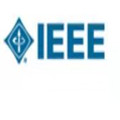Typical pipelines for model geometry generation in computational biomedicine stem from images, which are usually considered to be at rest, despite the object being in mechanical equilibrium under several forces. We refer to the stress-free geometry computation as the reference configuration problem, and in this work we extend such a formulation to the theory of fully nonlinear poroelastic media. The main steps are (i) writing the equations in terms of the reference porosity and (ii) defining a time dependent problem whose steady state solution is the reference porosity. This problem can be computationally challenging as it can require several hundreds of iterations to converge, so we propose the use of Anderson acceleration to speed up this procedure. Our evidence shows that this strategy can reduce the number of iterations up to 80\%. In addition, we note that a primal formulation of the nonlinear mass conservation equations is not consistent due to the presence of second order derivatives of the displacement, which we alleviate through adequate mixed formulations. All claims are validated through numerical simulations in both idealized and realistic scenarios.
翻译:暂无翻译




